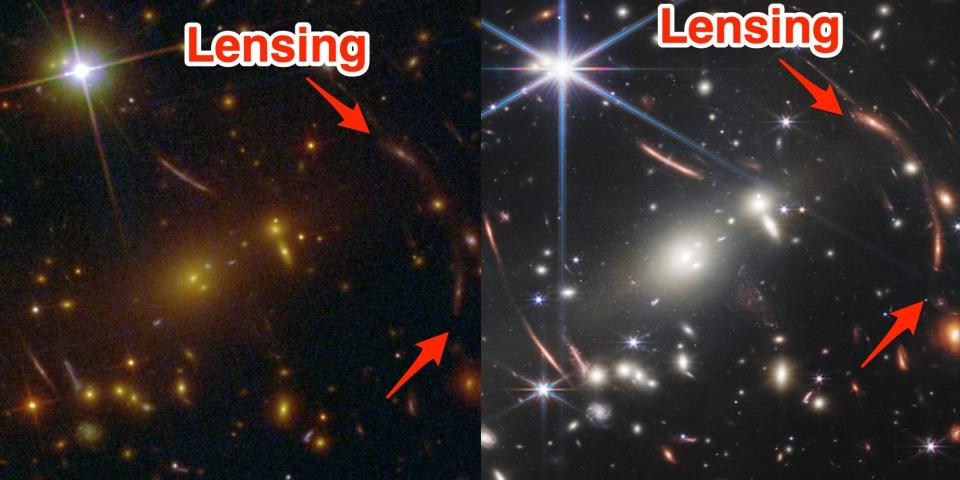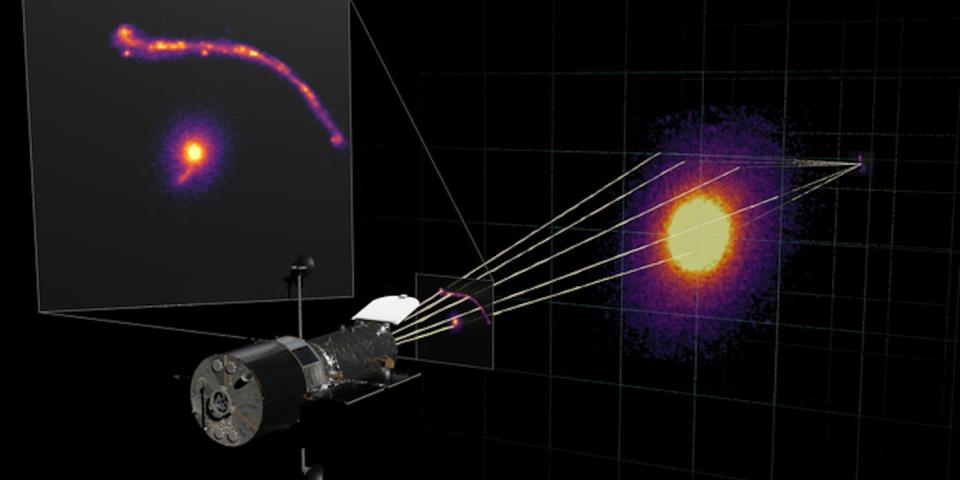An 'ultramassive' black hole has been discovered that's 33 billion times the mass of the sun

Scientists have found an ultramassive black hole lurking in the depths of the universe.
They estimate this black hole is 30 billion times bigger than our sun.
That would make it one of the biggest black holes ever discovered.
Astronomers have discovered an enormous black hole 30 billion times the mass of our sun lurking in the depths of the universe hundreds of millions of light-years away.
This so-called ultramassive black hole may be one of the biggest black holes ever to have been discovered, scientists said in a study published in the peer-reviewed journal Monthly Notices of the Royal Astronomical Society on Wednesday.
"Even as an astronomer, I find it hard to comprehend how big this thing is," James Nightingale, a study author from the department of physics of Durham University, UK, told BBC Radio Newcastle.
This black hole may remain one of the biggest holes ever discovered because physicists think black holes can't grow much bigger than that, Nightingale said.
"This particular black hole, which is roughly 30 billion times the mass of our sun, is one of the biggest ever detected and on the upper limit of how large we believe black holes can theoretically become, so it is an extremely exciting discovery," he said in a press release.
A black hole that acted like a looking glass

To assess the size of the black hole, the scientists studied a natural phenomenon called gravitational lensing.
Supermassive objects, like galaxies, can have a gravitational pull that is so intense that it bends rays of light.
When one galaxy is in front of another, the galaxy in the foreground can distort the light of the galaxy behind it. The light from the galaxy in the background then becomes magnified, making it visible to scientists on Earth.
But Nightingale and the other scientists in this study decided they didn't want to study the galaxy in the background. Instead, they used the lensing to assess how big the black hole at the center of the foreground galaxy needed to be to create that effect.
They looked at pictures of distant galaxies taken by the Hubble telescope, and found a galaxy that was creating this lensing effect. That picture is seen below, you can see the bright dot of a foreground galaxy in the middle, and the arc of light from the background galaxy in the top right-hand corner. A little flick of light is also seen near the galaxy in the foreground.

That's the flick the scientists were really interested in understanding. Nightingale and colleagues used computers to determine what kind of black hole could create the shape they were seeing in the picture.
Using this technique, they determined the size of the black hole at the center of the galaxy in the foreground. You can see more information about this in the video below.
The technique could unveil 'inactive' black holes
The discovery of this black hole pushes back the limits of cosmology, Nightingale told the BBC.
"How do you form a black hole this big in just 13 billion years of the universe's existence?" he said.
But these scientists are also really interested in figuring out what else the technique they uncovered can do.
"Most of the biggest black holes that we know about are in an active state, where matter pulled in close to the black hole heats up and releases energy in the form of light, X-rays, and other radiation," Nightingale said in a press release.
"However, gravitational lensing makes it possible to study inactive black holes, something not currently possible in distant galaxies. This approach could let us detect many more black holes beyond our local universe and reveal how these exotic objects evolved further back in cosmic time," he said.
Read the original article on Business Insider

 Yahoo News
Yahoo News 